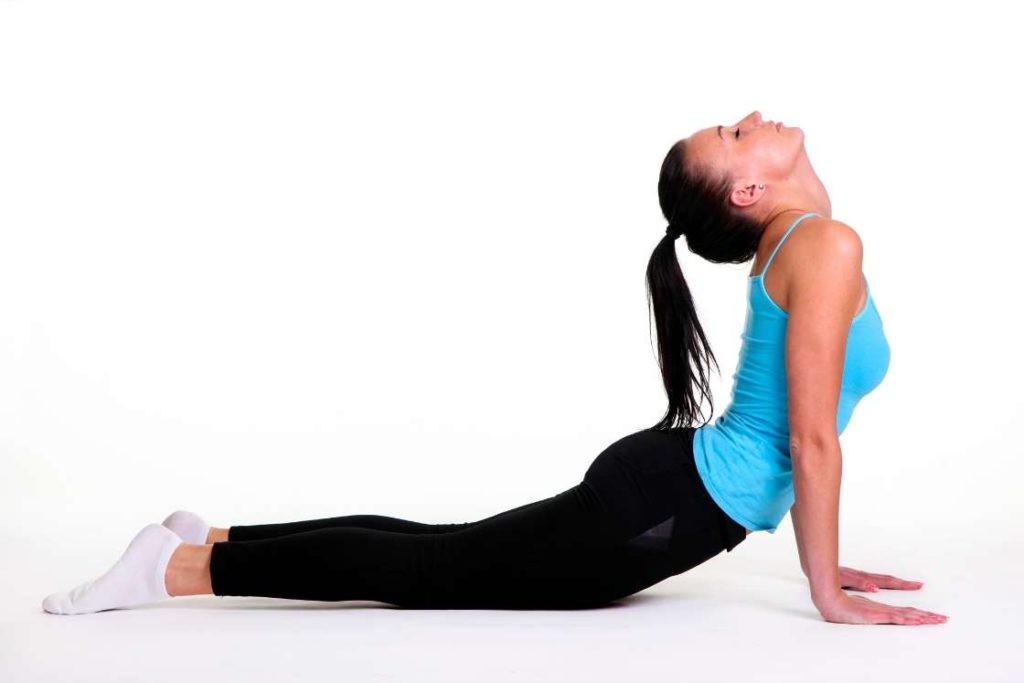
[ad_1]
Bhujangini Mudra is known as after the serpent kind the physique takes whereas training this gesture. “bhujang” refers to “cobra” or “serpent” and “mudra” means “gesture”.
Training Bhujangini mudra includes leaning ahead stretching the neck and lifting the chin. That is adopted by gulping the air into the abdomen. This follow mimics a cobra flaring its hood, therefore the identify. It is usually referred to as “cobra gesture” or “cobra respiration”.
Bhujangini mudra is a sort of mana (head) mudra forming a serious a part of Kundalini yoga kriyas. Typically, in Mana Mudras sense organs, viz eyes, nostril, ears, nostril, tongue, and lips are concerned as a method of meditation follow, in distinction to easy hasta mudras the place solely palms are used.
Bhujangini Mudra Follow Information
Bhujangini mudra is carried out by sucking the air in through mouth into the abdomen after which expelling by the identical by belching.
Expelling the air within the type of belch or burp in Bhujangini mudra symbolizes the cleaning of the digestive tract. Additionally, the satiating results that it leaves are unimaginable for the practitioner on bodily, psychological, in addition to non secular ranges.
Thus, it serves as a cleaning method to chuck the interior impurities utilizing air as a medium. Apart from being a mudra this follow additionally includes targeted respiratory patterns, therefore additionally categorized as pranayama.
Historic conventional texts like Gheranda Samhita states it as a destroyer of dying and decay.
Bhujangini mudra shares a detailed resemblance with an historical cleaning follow concerned in Shatkarma, Vatsara Dhauti. Nonetheless, in Vatsara Dhauti the air sucked in through mouth is expelled out by the anus, not like Bhujangini.
Bhujangini Mudra Steps
- Sit in a cushty meditative posture like sukhasana, padmasansa, and so on.
- Shut the eyes and loosen up the physique particularly the stomach.
- Lean your higher physique ahead at your hips pushing the chin ahead.
- Stretch your neck upward lifting the chin and gazing in the direction of the ceiling.
- Inhale sucking the air by the mouth in a sequence of gulps.
- Fill the air into the abdomen as a substitute of the lungs as if you might be consuming water.
- Broaden the abdomen as a lot as you possibly can.
- Sit again to regular place and maintain the air in so long as you’re comfy.
- Then, expel it out by belching by the mouth.
Period and Sequence of the Follow
- The above-mentioned follow kinds one spherical of the Bhujangini mudra. It’s endorsed to follow three to 5 rounds at a stretch.
- As many of the mudras, the most effective time to follow it’s also early morning hours.
- After finishing the follow loosen up the physique into the preliminary pose and breathe usually.
- For higher outcomes, at all times follow it on an empty abdomen.
- One can follow it at any time however it’s particularly really helpful after Shankha Prakshalana method.
- Attempt to keep away from the follow in polluted locations or if there are any respiratory problems.
Variation

There’s additionally a modified model of Bhujangini mudra that differs within the place during which it’s carried out.
- As a substitute of sitting in a meditative pose, this variant is practiced assuming Bhujangasana.
- The additional follow ranging from gulping the air through mouth stays the identical.
As per this variant, ‘bhuja’ means arm. On this variation, arms are used to raise the pinnacle up after which the mudra is carried out so it’s named Bhujangini mudra.
Aspect Results of Bhujangini Mudra
Whereas Bhujangini Mudra affords quite a few advantages, it’s important to concentrate on its potential negative effects:
- Abdomen Discomfort: Gulping air into the abdomen may cause discomfort, bloating, or a sense of fullness.
- Dizziness: Holding the breath for prolonged intervals could result in dizziness or light-headedness.
- Stomach Strain: Increasing the abdomen can enhance strain on the belly organs, which can be uncomfortable for some.
- Neck and Again Pressure: Leaning ahead and stretching the neck may cause pressure, particularly for these with pre-existing points.
Bhujangini Mudra Advantages
1. Improves digestion
Bhujangini Mudra is understood for enhancing the effectivity of the digestive organs. It stimulates the partitions of the esophagus and the digestive glands, facilitating the secretion of digestive juices. Consequently, it’s useful for bettering digestion.
2. Tones the abdomen
This mudra has satiating results on starvation, thus regulating consuming habits. It advantages the digestive tract internally and strengthens the belly muscle mass, offering a toned tummy and a fitter look.
3. Cures digestive problems
Bhujangini mudra stimulates the wind (Vayu) factor. It balances the Samana Vayu and Pachaka Pitta expels Apana Vayu. It additionally stimulates a balancing impression on the prana Vayu – Udana Vayu axis.
This leads to eradicating the stagnant air from the system and alleviates digestive problems like gastritis.
4. Improves respiration
Bhujangini mudra follows the phases of pranayama follow, i.e. inhalation (Puraka), retention (Antara), and exhalation (Rechaka).
Each inhalation and exhalation happen by the mouth and retention are practiced by holding the breath contained in the abdomen. It improves respiration in a manner that permits the practitioner to drift within the water for an extended period.
4. Energetic advantages
This mudra has rather a lot to supply together with the activation of two power chakras. It stimulates the Photo voltaic plexus (Manipura) and throat (Vishuddha) chakras.
Be aware: Combining the follow of Bhujangini mudra with Tadagi mudra strengthens the vocal cords. It’s typically practiced by singers to have a melodious voice.
Conclusion
Bhujangini mudra is a power-pack that holds so many advantages inside a single follow. There’s not a single downside or limitation that you should use as an excuse to skip this follow.
Due to this fact, subsequent time once you sit all the way down to meditate or to do your every day yoga routine don’t miss training just a few rounds of Bhujangini mudra.
[ad_2]